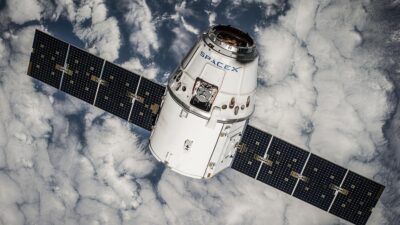Tesla, Inc. is widely recognized for its electric vehicles (EVs) that have revolutionized the automotive industry. However, the company’s ambitions extend far beyond just cars. Tesla is making significant strides in energy storage and grid solutions, positioning itself as a key player in the renewable energy landscape. These ventures not only complement Tesla’s core mission of accelerating the world’s transition to sustainable energy, but they also present a transformative opportunity for the energy sector.
The Genesis of Tesla’s Energy Division
Founded by Elon Musk and a group of engineers in 2003, Tesla initially focused on electric vehicles. However, as the climate crisis gained prominence, Musk saw an opportunity to integrate renewable energy into everyday life. This vision led to the establishment of Tesla Energy, which encompasses the production of energy storage solutions, solar products, and grid services.
Energy Storage Solutions: Powerwall and Powerpack
One of Tesla’s flagship products is the Powerwall, a home battery system designed to store energy generated from renewable sources like solar panels. The Powerwall allows homeowners to use this stored energy during peak demand times, reducing reliance on the grid and lowering electricity bills. With its sleek design and user-friendly interface, the Powerwall has become an attractive option for eco-conscious consumers.
For commercial applications, Tesla offers the Powerpack and Maxwell systems, which are tailored to provide larger storage solutions for businesses and utility companies. These systems play a critical role in stabilizing energy demand and supply. By harnessing and distributing energy more efficiently, Tesla’s energy storage solutions help mitigate the impact of intermittent renewable energy sources like wind and solar.
The Megapack: Scaling Energy Storage for Utilities
Taking the concept further, Tesla introduced the Megapack, designed for utility-scale energy storage. Each Megapack can store up to 3.9 MWh of energy, making it ideal for grid operators looking to balance supply and demand. These large-scale installations can provide emergency backup, enhance grid resilience, and facilitate the integration of renewable energy sources.
Tesla’s first major Megapack project was deployed in South Australia, where it successfully demonstrated the capability of large-scale battery storage systems to improve grid reliability. The success of such projects has attracted attention from other regions, encouraging investments in similar technology worldwide.
Grid Solutions: Tesla’s Virtual Power Plant
Beyond individual storage solutions, Tesla is exploring the concept of a virtual power plant (VPP). This innovative idea involves aggregating the energy stored in multiple Powerwalls across homes to create a decentralized energy network. When demand peaks or supply falls short, the VPP can release stored energy back into the grid, effectively acting as a distributed power source.
The VPP model not only maximizes the efficiency of energy use at the individual level but also strengthens grid stability in times of crisis. For instance, Tesla has initiated projects in Australia and California, where communities can come together to form a collective energy initiative, thus reducing the need for traditional power plants.
Solar Solutions: Integrating Renewables
Tesla’s commitment to renewable energy is also reflected in its solar division. The Tesla Solar Roof integrates solar panels into roofing materials, allowing homeowners to generate energy without compromising aesthetics. This innovative product addresses a critical barrier to solar adoption—appearance—while providing an efficient energy solution.
Additionally, Tesla offers traditional solar panels that can be paired with their energy storage systems for a complete eco-friendly solution. By producing both solar energy and providing storage, Tesla aims to empower individuals to take control of their energy consumption, reducing dependence on fossil fuels and lowering energy costs.
The Road Ahead: Challenges and Opportunities
While Tesla’s ventures into energy storage and grid solutions are promising, they are not without challenges. The energy landscape is highly regulated, and navigating these regulations can be complex. Furthermore, the competition in the energy storage market is intensifying, with players like LG Chem and Panasonic entering the field aggressively.
Despite these challenges, the opportunity is vast. As countries commit to net-zero emissions targets, the demand for energy storage and renewable solutions is set to surge. Tesla, with its expertise in innovation and technology, is well-positioned to capture this burgeoning market.
Conclusion
Tesla’s foray into energy storage and grid solutions demonstrates that the company’s vision spans far beyond electric vehicles. Through products like the Powerwall, Megapack, and Solar Roof, Tesla is actively working to reshape the energy landscape, making sustainable solutions accessible to individuals and businesses alike. As the world increasingly shifts towards renewable energy, Tesla’s initiatives serve as a blueprint for integrating cleaner energy into our daily lives. With their ambitious projects, Tesla is not just driving cars; they are driving change.



